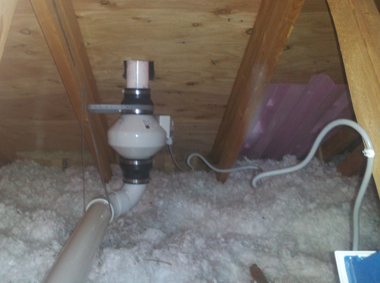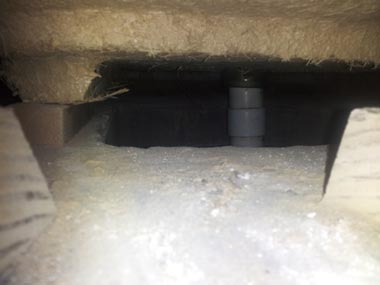Radon is a naturally occurring, colorless, odorless, highly radioactive gas. It is produced by the natural radioactive decay of uranium 238 in rock, soil, and water. Radon and its associated by-products emit alpha and beta particles and gamma rays. These particles attach themselves to other airborne particles such as dust, and are inhaled into your lungs. Once inside your lungs, they lodge in the mucus membranes. The damage from these particles can cause cancer.
Radon is the leading cause of lung cancer among non-smokers, and it is the second leading cause of lung cancer in America. Radon claims about 21,000 lives annually. The amount of radon and the length of time you have been exposed to it determine your lung cancer risk from this sometimes deadly gas. The higher the level, the higher the risk.
WHAT TO EXPECT:
The most cost-effective of the approaches we use is sub-slab depressurization. This system integrates PVC pipes with an exhaust fan. We connect a PVC pipe to the soil either through a hole in the slab of your basement floor, a sump pump lid, or beneath a plastic sheet in the crawl space. This system creates a lower pressure in the soil both in and around the structure when compared to the indoor pressure, thus preventing the transference of radon and other soil gases to the inside of your home.
Additionally, we seal cracks, holes, and other openings to the substructure of the building to reduce the amount of flow necessary for controlling the pressure difference between house and soil. This increases system effectiveness, while also reducing thermal losses and fan requirements.
After completing the installation, a professional independent testing lab should re-test your indoor radon levels. This post-completion test provides proof that we have done our job correctly, and will remove any conflict of interest (from both Radon Mitigation Systems and the homeowner).

